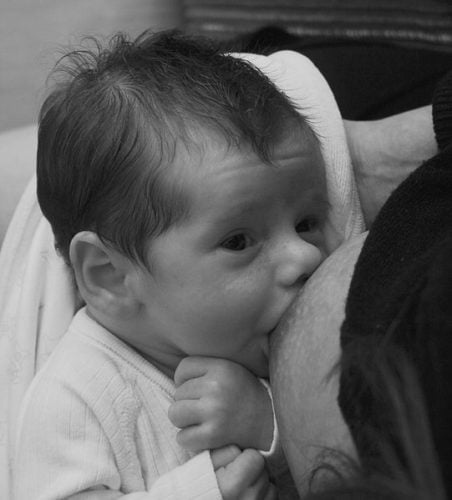To read the previous part of this entry, go to Breast Engorgement During Breastfeeding.
You can do several things for breast engorgement. In this entry, I will explain some hints for before, during and after breastfeeding.
Before breastfeeding:
- Make sure the areola is flexible before breastfeeding. If it isn’t, apply hot damp compresses for a couple of minutes. Then manually extract a bit of milk to soften the tissues to promote better latching by the baby.
- Lightly massage the breasts from the thorax towards the nipple.
- If the breasts are too engorged, manually extract a bit of milk before breastfeeding using a pump (in french).
During breastfeeding:
- That said, if the baby feeds from one breast only (the most engorged one first), and the mother is still engorged, you shouldn’t empty the breast manually or with a pump. We want relief by getting rid of the milk. So, send a message to the brain to diminish milk production because there is too much.
- Mothers can lie on their back. The mammary gland will be spread out on the thorax which will diminish the swelling process.
- You can compress the bumps that appear on the breast during breastfeeding.
- Increase the number of feedings to each time your baby wakes.
- Place a hot washcloth on the breast when the baby feeds. This will dilate the blood vessels and expel the contents into the baby’s mouth in an easier way.
- Move your shoulders to activate circulation. This can help release the contents of the breasts.
- You partner can massage your back to activate circulation.
After breastfeeding:
- Apply cold compresses to the breasts, but it’s important not more than 10 minutes per hour.
- You can apply cabbage leaves. You have to wash them and apply them to the breast without covering the areolae.
- Use a proper bra to support the weight of your chest without crushing the breast structures.
- A natural thing that can help is a natural clay poultice applied to the breast. Clay absorbs liquids, so it’s an effective anti-inflammatory. Be careful of lower quality china clay.
- Pump your milk from the uncomfortably engorged breast to get relief.
- Finally, we can talk about ultrasounds. Did you know that ultrasound techniques are used by physiotherapists to treat many problems, including pathological engorgement in breastfeeding mothers?
- You can also use analgesics for relief during breastfeeding. Ibuprofen, naproxen and anti-inflammatory and acetaminophen is a painkiller.
To learn more about other methods, see the next entry Ultrasound Techniques.


